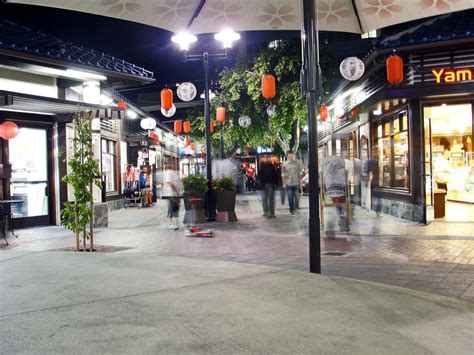
Little Tokyo, Los Angeles – the largest official Japantown in the US and a bustling center of activity in the heart of LA. With strong connections to Japanese culture, cuisine, and media, Little Tokyo is one of the most popular destinations for young adults looking to buy merchandise or enjoy authentic Japanese cuisine found nowhere else. Being located next to important destinations such as the Financial District, LA Union Station, and having access to the metro A and E lines, Little Tokyo acts as a convenient place to live as well. With over 1500 people living in its 0.1 square mile boundary, Little Tokyo is one of the densest neighborhoods in Los Angeles, which has led to high rent prices and an exorbitant cost of living. Compared to the other Asian enclaves in LA – Koreatown and Chinatown – Little Tokyo shares a similar origin story, though there are varying differences in its recent history.
Little Toyko finds its origins in the late 19th century, when a large wave of immigrants from Japan came to replace cheap Chinese laborers following the Chinese Exclusion Act of 1882. These immigrants found their way to the present day location of Little Tokyo where they set up Japanese shops, restaurants, and businesses, which attracted more Japanese immigrants to the area. The starting population was around 3000 in the early 1900s, but following the San Francisco Earthquake in 1906, many Japanese residents moved from San Francisco to Los Angeles, bumping up its population to 10,000. Like the other Asian enclaves, however, growth in Little Tokyo was hindered as a result of the Exclusion Act of 1924, which barred future immigration from Asian countries.
Despite this, the population eventually reached 35,000 residents by WW2, which led to LA County containing one of the largest Japanese populations in the US alone. WW2 saw a turning point for the neighborhood – due to the hostility between the US and Japan, Japanese Americans were rounded up and sent to internment camps during the war, which decimated Little Tokyo and its Japanese population. Around 37,000 Japanese were imprisoned in LA County from 1942-1945, yet despite this, Little Tokyo’s population continued to grow as a result of new immigration trends.
Vacancy rates in Little Tokyo skyrocketed, and white landowners had to find new tenets to replace the previous Japanese residents. An opportunity presented itself in the Second Great Migration, which saw millions of African Americans relocate out of the South to the West and Midwest regions of the US. Tens of thousands of African Americans moved to Little Tokyo, which saw a population increase from 30,000 to 80,000 during the war, leading to the renaming of Little Tokyo to Bronzeville for a short while. The neighborhood became incredibly overcrowded, with residents taking turns to sleep on a single bed, or living amongst 15 other people in a room. Around 57 buildings were deemed unfit for human habitation, and many families were evicted from the region. Crime skyrocketed in the region, and health problems were widespread due to overcrowding.
Bronzeville lasted for the latter half of WW2, but after jobs in the defense industry disappeared, so did many of its recent short lived residents. Japanese Americans began to return to the neighborhood, pushing out Bronzeville residents, and re-establishing their presence in DTLA. However, a lack of housing led to some Japanese residents moving into areas next to DTLA, such as Boyle Heights, and as a result, the Japanese American population was only 1/3rd its pre-war levels. Little Tokyo continued to shrink as the construction of the LAPD headquarters removed parts of the commercial area, displacing 1,000 residents.
Little Tokyo would find a second life in the Little Tokyo Project, which sought to revitalize the region through the opening of shopping plazas and redevelopment projects in the area. This attracted new residents, businesses, and redefined Little Tokyo as a touristy region with increased commercial activity. Today, Little Tokyo is a community center for Japanese Americans, with strong cultural and historical connections through its numerous authentic restaurants and the Japanese American National Museum. With ease of access through the LA Metro A and E lines, Little Tokyo is a popular place for teenagers and young adults to hangout and enjoy the numerous shops and cultural amenities of the region. Unlike Koreatown however, construction is minimal, with only 2 apartment projects currently undergoing construction. Given its small location and established infrastructure, it’s unlikely that Little Tokyo will grow anytime soon, and with such a small population, it’s more of a place to visit rather than a place to live. But despite its small size, Little Tokyo continues to occupy a big place in the heart of Angelenos.
(Photo Credit: Jusetefrain licensed under the Creative Commons Attribution-Share Alike 3.0 Unported License





